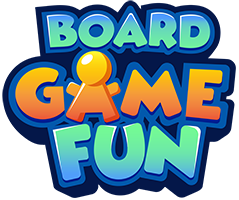How to Play Rummy
Rummy is one of those classic card games that has stood the test of time. Whether you’re gathering with friends or looking for an engaging pastime at home, Rummy offers a perfect balance of strategy and fun. If you’re short on time or prefer a low-cost gaming option, this guide will show you everything you need to know to start playing—no stress, no fuss.
Brief Game Overview
- Type of Game: Set-building card game
- Objective: Form sets (3–4 of a kind) and runs (3+ consecutive cards of the same suit) to lower your total point count.
- Who It’s For: Adults (and teens) seeking a social, strategic, but easy-to-learn card game.
- Typical Playtime: Around 20–40 minutes, depending on the number of players.
Getting Started – What You’ll Need
Essential Materials
-
Standard Deck of Cards
- 52-card deck. You may need two decks for larger groups or certain Rummy variations like Gin Rummy.
-
Paper & Pencil (Optional)
- Makes tracking scores simpler, especially if you’re playing multiple rounds.
-
Flat Playing Surface
- A table or any comfortable flat surface to organize your cards.
Budget Considerations
- A standard deck is inexpensive and widely available.
- Digital versions of Rummy can also be found online for free.
Step-by-Step Instructions on How to Play Rummy
Setup
- Choose a Dealer: Have someone shuffle and deal cards.
- Deal the Cards: In a standard game with 2–4 players, deal 10 cards to each player. If you have 5 or more players, deal 7 cards each.
- Form the Stock & Discard Pile: Place the remaining cards in a face-down stack (the “stockpile”). Flip over the top card to form the face-up discard pile.

- Objective: Organize your hand into valid sets (3 or 4 cards of the same rank) or runs (3 or more consecutive cards in the same suit).
-
Turn Structure:
- Draw: At the start of your turn, draw one card from either the stockpile (face-down) or the discard pile (face-up).
- Meld: Arrange cards into sets or runs if you can (or hold off if you’re strategizing).
- Discard: End your turn by discarding a single card onto the face-up pile.
-
Ending a Round:
- A round ends when a player discards their last card (“going out”).
- The other players tally points from any cards left un-melded in their hands.
Scoring & Winning
-
Card Values:
- Numbered cards = face value
- Face cards (J, Q, K) = 10 points
- Aces = 1 or 15 points (agree on which before the game starts)
-
Scoring Methods:
- After someone goes out, all other players add up points for any un-melded cards.
- You can play until someone reaches a set score (e.g., 100 or 500 points) or until a certain number of rounds have passed. Lowest total score wins.
Secrets to Win Rummy
- Keep an Eye on Discards: Watch what others are discarding or picking up; it might reveal what melds they’re trying to make.
- Know When to Lay Down Melds: Sometimes it’s advantageous to hold melds so you can surprise opponents and go out quickly. However, the risk is being “stuck” with high-value cards if another player beats you to the punch.
- Manage Aces Wisely: Decide early on if you’re treating Aces as high or low. If they’re high (15 points), be careful not to get stuck with them un-melded.
Variations & House Rules
- Gin Rummy: Each player is dealt 10 cards, and the objective is to “knock” or go Gin with minimal points left in your hand.
- Use of Jokers: Sometimes Jokers are included as wild cards. If you’re playing with Jokers, clarify which cards they can represent.
- Scoring Modifications: Some groups allow Aces to be used both high and low in runs. Confirm these rules before the game begins.
Troubleshooting Common Issues
- Running out of stockpile cards: If the stockpile is exhausted, shuffle the discard pile (excluding the top card) to create a new stockpile.
- Disputes about melds: Before playing, agree on any specific rule variations (e.g., whether Aces can be high or low in runs) to avoid confusion.
Frequently Asked Questions
Q: Can I play Rummy with just two players?
Yes, Rummy works perfectly for two players. The gameplay remains the same, but the strategies may shift due to fewer cards in play.
Q: What happens if a player forgets to discard?
If a player forgets to discard, their turn isn’t considered complete. They can quickly discard before the next player draws.
Q: Is there a time limit for turns?
While there’s no official time limit, setting one (e.g., 30 seconds per turn) can keep the game flowing smoothly.
Q: Are Jokers used in Rummy?
Jokers are optional and can act as wild cards, substituting for any card in a set or run.
The Final Shuffle
Rummy is a timeless classic because it’s accessible, strategic, and endlessly fun. With just a single deck and a few minutes of preparation, you can enjoy a game that challenges your mind without overwhelming you. As you practice, you’ll discover your own strategies for when to meld or how to manage high-value cards. The more you play, the better—and faster—you’ll get!
We walk you through setup, gameplay, and scoring so you can see exactly how a typical round plays out!
Ready to try your hand at Rummy? Grab a deck of cards, invite some friends, and get started. For more guides on card games or related activities, be sure to explore our collection and share your progress with others!


